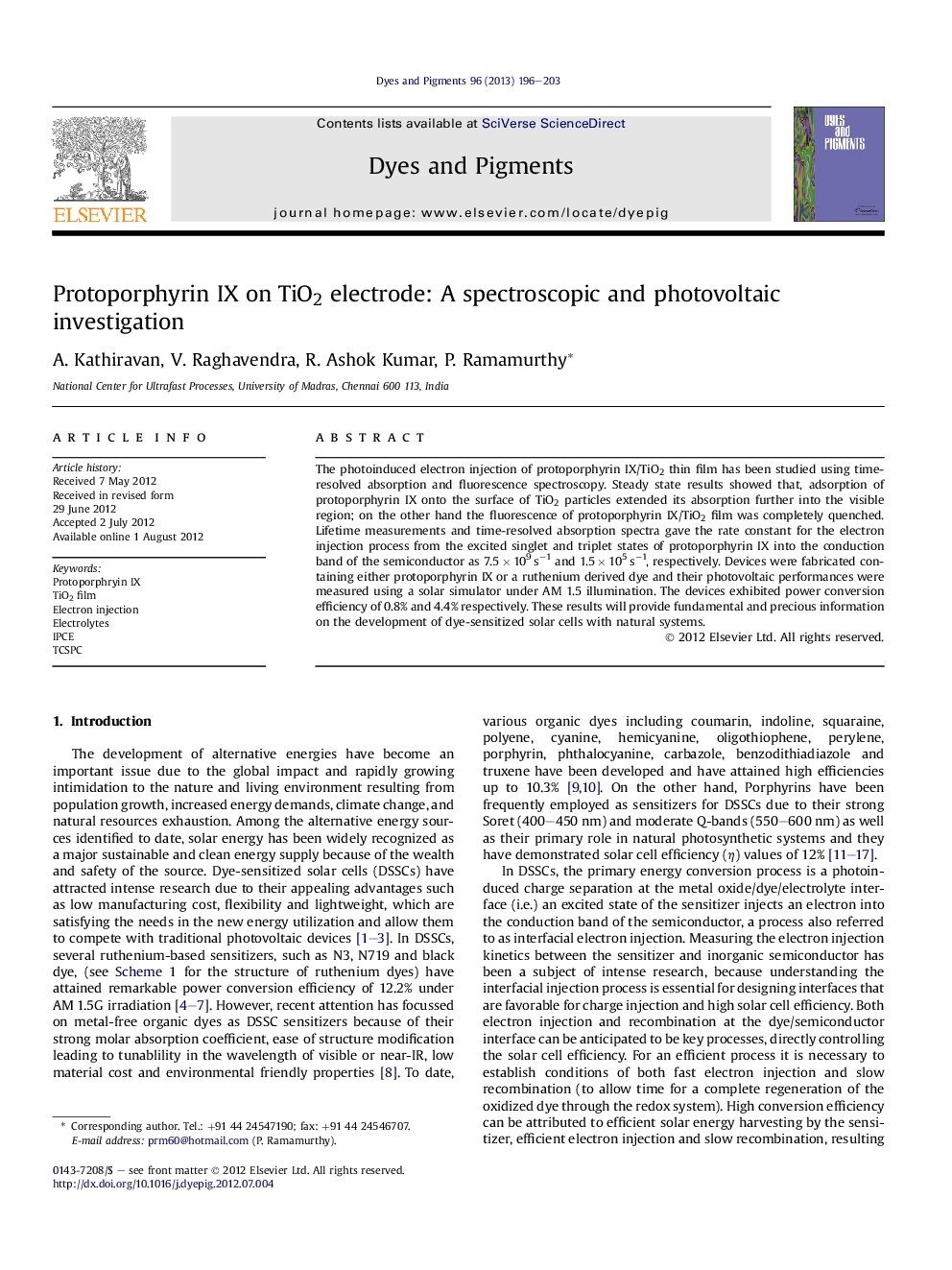| Article ID | Journal | Published Year | Pages | File Type |
|---|---|---|---|---|
| 176892 | Dyes and Pigments | 2013 | 8 Pages |
The photoinduced electron injection of protoporphyrin IX/TiO2 thin film has been studied using time-resolved absorption and fluorescence spectroscopy. Steady state results showed that, adsorption of protoporphyrin IX onto the surface of TiO2 particles extended its absorption further into the visible region; on the other hand the fluorescence of protoporphyrin IX/TiO2 film was completely quenched. Lifetime measurements and time-resolved absorption spectra gave the rate constant for the electron injection process from the excited singlet and triplet states of protoporphyrin IX into the conduction band of the semiconductor as 7.5 × 109 s−1 and 1.5 × 105 s−1, respectively. Devices were fabricated containing either protoporphyrin IX or a ruthenium derived dye and their photovoltaic performances were measured using a solar simulator under AM 1.5 illumination. The devices exhibited power conversion efficiency of 0.8% and 4.4% respectively. These results will provide fundamental and precious information on the development of dye-sensitized solar cells with natural systems.
► Protoporphyrin IX and the ruthenium dye N3 (for comparison) devices were fabricated and they have showed power conversion efficiency is 0.8% and 4.4%, respectively. ► Understanding of photophysical processes in Protoporphyrin IX/TiO2 electrodes allowed us to extract the parameters that are affecting solar cell efficiency of Protoporphyrin IX. ► The lower solar cell efficiency of PPIX is due to faster electron–cation recombination.
